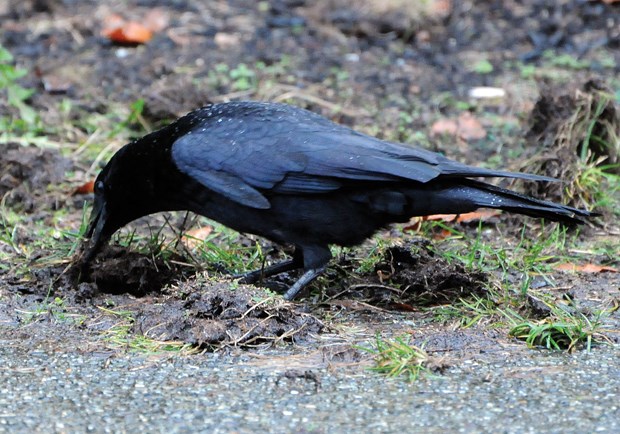The most popular gardening question I have been asked recently: How do I get rid of chafers in my lawn?
Unlike many other problems in the garden that often have straightforward solutions, eliminating chafer grubs from the lawn is not simple or easy. The European chafer beetle, also known by its Latin name Rhizotrogus majalis, has become a serious pest in many areas of the Lower Mainland. Chafer beetles were first introduced to our region in 2001 from a shipment of nursery stock delivered from Eastern Canada to New Westminster. The chafer larvae were living inside the root balls of trees and quickly spread out to Burnaby, Vancouver, part of the North Shore,
Richmond, Delta and east into Coquitlam, Port Coquitlam and Port Moody. It was assumed that Vancouver's harbour would prevent chafer beetles from crossing from Burnaby and Vancouver to the North Shore, but that was just wishful thinking.
In Eastern North America, chafer beetles eat the roots of trees, shrubs, vegetables, perennials and some forestry plantations. But here on our green coast, chafers dine happily on the abundance of lush green lawns found in our gardens, parks, boulevards, and sport fields.
Some information on chafer control can be found on the websites of all three North Shore municipalities and on the B.C. Ministry of Agriculture website at www.agf.gov.bc.ca/cropprot/chafer.htm. However, the control options are limited.
There are two primary reasons control of European Chafer Beetles is so difficult. Firstly, the larvae burrow into the soil under the lawn to eat grass roots during fall and winter making finding and controlling the grubs difficult. Secondly, and this applies to all insect control, if you successfully control any single pest infestation (grubs in your lawn), there are thousands more insects (adult chafer beetles) looking for food to eat (lawn in this case). And as we have learned from Rachel Carson's era, complete eradication of any single insect pest from the environment is not realistic or possible. Pest eradication was just a half-truth told to us by manufacturers who wanted to sell poisonous pesticides.
Another compounding issue related to chafers has reared its ugly head - the relaxation of cosmetic pesticide bylaws to allow spraying for chafers in lawns. Any such regressive policies would seriously jeopardize the health of our air, water and soil, and the health of our children. The pesticides to control chafers include the toxic insecticide carbaryl, and imidacloprid, which is a neurotoxin belonging to the group of neonicotinoids associated with bee deaths.
The added problem with use of insecticides for chafer control is the non-target death of earthworms and beneficial soil organisms living in the lawn. Not to mention leaving a toxic and persistent pesticide residue on the surface of the lawn for kids and pets to absorb into their innocent bodies.
So what does a person do if they have a chafer infestation in their lawn? As I told one of my former students recently,
if people are unwilling to change their chafer infested lawns to another design element, then put the issue into a financial frame of reference for them. Meaning, it will cost X amount of money to fix the problem this year and the same amount next year and so on for many years thereafter. Adding up the long-term cost and ongoing unsightly appearance of a chafer-ravaged lawn may convince some homeowners to consider a design alternative to lawn.
I have previously written in Dig Deep about several control methods for chafers. But the one option that is the most permanent - artificial turf - has problems that prospective owners need to know about. The concerns emerging about artificial turf include: The use of fine recycled rubber granules as infill between the grass blades may lodge in the lungs of users during play. I recommend only sand infill for residential artificial turf. The use of antiseptic cleaners to remove blood, sweat, vomit, spit and urine from the turf may pose additional environmental and health issues. And, how will all of the thousands of square metres of worn out artificial turf be safely disposed of at the end of lifespan?
With all of those chafing issues in mind, there are few long-term, sustainable and environmentally friendly options available for lawn lovers. Except for changing the lawn to an alternative design element that is not susceptible to chafer grubs. What that element would be depends on lifestyle, personal preference and budget limitation.
The choice is simple: Pay once to permanently fix the problem with a design change.
Or, forever spend money every summer for nematode sprays (if water restrictions allow). And spend more money every autumn to re-seed, topdress and repair the lawn.
As Albert Einstein so prophetically said, "The definition of insanity is doing the same thing over and over again and expecting different results."
Todd Major is a journeyman horticulturist, garden designer and builder, teacher and organic advocate. stmajor@shaw.ca



